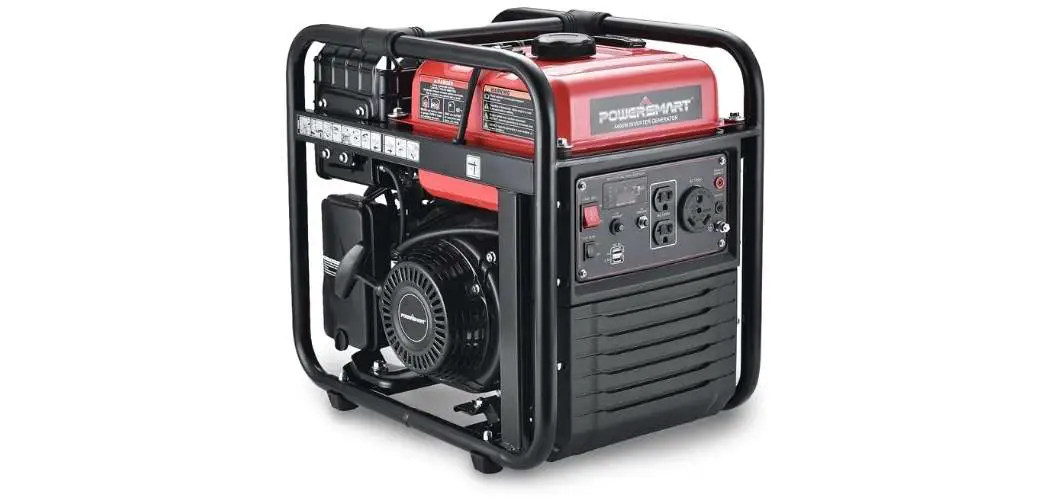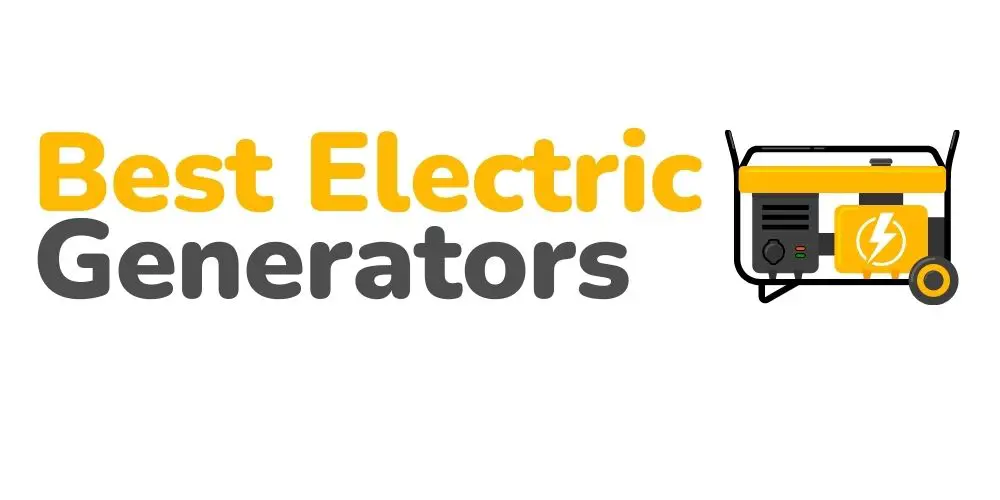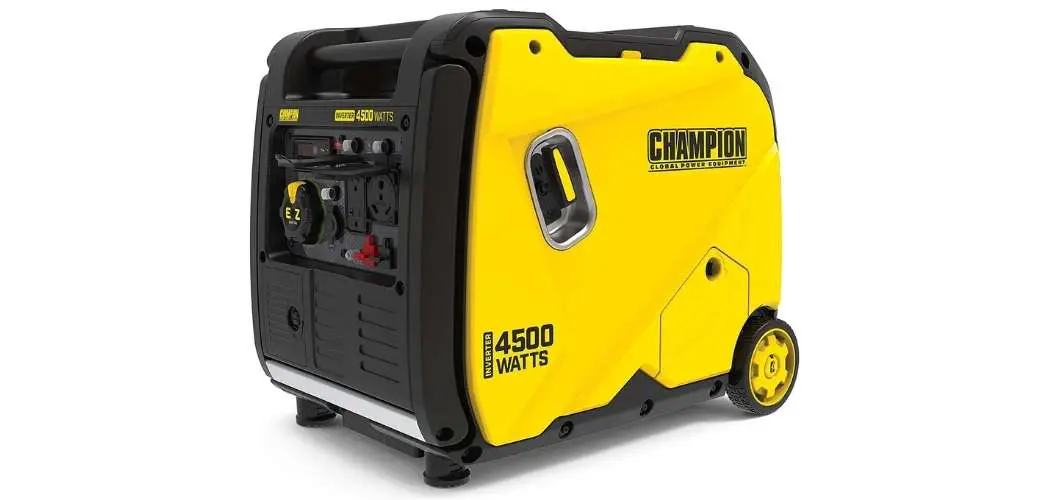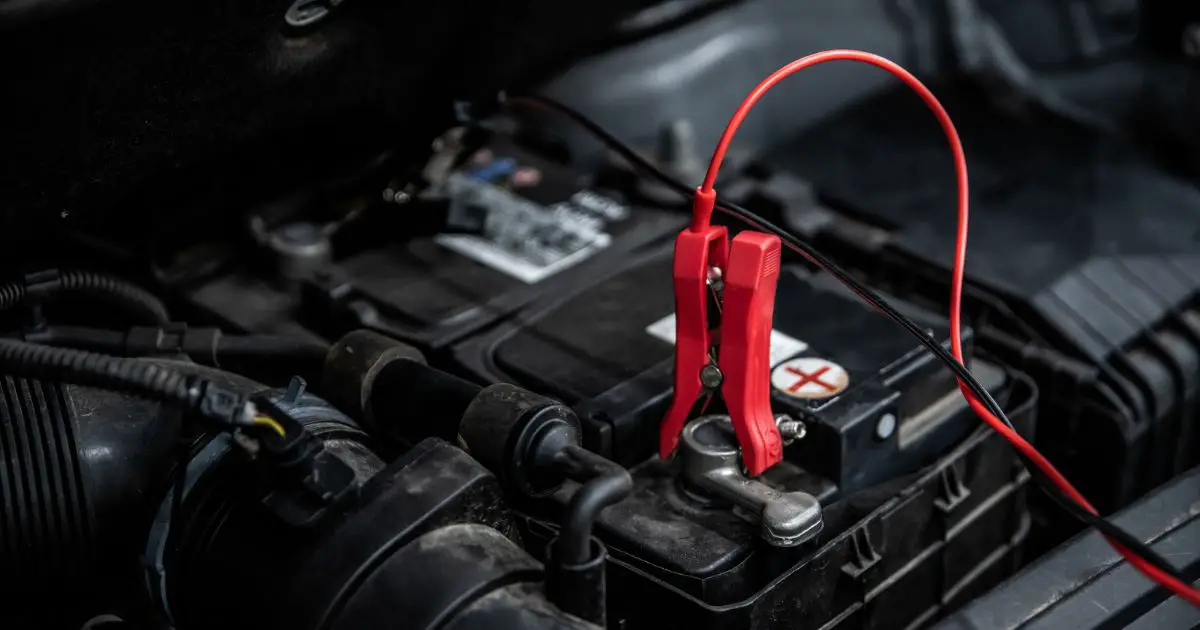Inverter generators are even more portable models of traditional portable generators. Inverters come with a compact and lightweight design. As these units are highly fuel-efficient, they do not consume too much fuel. Therefore, they have a small tank that also reduces their weight and size.
These generators come equipped with highly efficient engines that do not consume much energy. But they come with a small output capacity. Therefore, they are not going to power your entire home.
Traditional units and inverter units both run on engines that produce power. But they both work quite differently.
In this post, we are going to see how inverter generators work. So, keep reading.
What Is Special About an Inverter Generator?
So, what makes these inverters special? Inverters are capable of producing clean energy. They produce clean energy with minimal distortions. There are no voltage spikes with these units, and you can conveniently charge your sensitive, electronic devices with these units.
These units have smaller engines. It means that they are not going to produce as much output as those traditional units do. But it also means these units are going to be much quieter than the traditional ones. Fuel efficiency is also going to be on the lower side.
Traditional units produce dirty power because there are too many fluctuations in their output. With these fluctuations, standard output is capable of producing dirty power that has fluctuation voltage. It can be pretty dangerous for your sensitive electronic devices.
Is an Inverter Generator Good for Home Use?
An inverter unit comes with a small output capacity. In most cases, you will find an inverter unit that ranges between 2,000W to 3,000W, but at max, it can go up to 7,000W.
Traditional units are far more powerful and can go up to 17,000W. Therefore, they have a much higher output capacity and can power many more items than these inverter units.
Inverter units can only power a small fridge, a coffee machine, TV, vacuum, toaster, lamp, fan, stove, oven, and other small items. But this inverter unit cannot power anything more significant. You might go for powering your small furnace if you have enough of a big inverter unit.
If you are looking to power your entire home, you should consider going for a traditional unit. These traditional units are better suited for powering an entire home. These traditional units are either portable generators or home standby units.
How Does an Inverter Generator Work Differently?
Traditional units can produce alternating current directly. On the other hand, inverter units can produce alternating current then convert it into direct current. After that, it converts it back into alternating current.
All the generators can produce power that is up to 60 Hz. If the frequency fluctuates even the slightest, the voltage can damage your appliances.
With a frequency of 60 Hz, the number of rotations per minute if an engine turns out to be around 3600 RPM. When the speed increases or decreases, it may alter the frequency of the output current.
So, a traditional unit must run up to 3600 RPM at a consistent rate to be fuel-efficient and power your appliances without damaging them. A traditional unit consumes more fuel to keep running at this RPM.
Now inverter units can produce power in three different stages. They first produce an alternate current and then convert it into a direct current. After that, it converts it back into alternate power with a low frequency.
It means that inverters can manage less power that runs at a frequency rate and does not fluctuate. Inverters can conveniently work according to demand and can ramp up power when the demand is high. But it is still not going to be as high as traditional units can manage.
With a more consistent output, and the ability to increase or decrease voltage, inverter units can handle demand very well while remaining fuel-efficient.

Traditional Generators vs. Inverters – The Primary Differences
Current
A technical difference between these two units is the type of electricity they produce. Traditional units can only produce alternating current from direct current. In contrast, inverter units can produce alternating current from direct current and convert it into alternate current.
Inverters are capable of producing sine waves to ensure minimal harmonic distortion. It means that you can use it to pierce your sensitive electronic devices. It means inverter units can produce cleaner current than traditional units. Traditional units have a messier energy output, and it can damage your sensitive electronics.
Portability
Inverters are more portable compared to traditional units. And it directly relates to the power output. Traditional generators tend to consume more fuel, and they have bigger tanks. Inverter units need less fuel and have smaller fuel tanks.
Despite being larger, traditional portable units do come with larger wheels on them. Therefore, they become much easier to move and handle. But moving such a unit can still be an annoying task because these conventional units can weigh more than 100 pounds.
Inverters are much smaller as they have smaller fuel tanks. They also do not have a bigger engine. It reduces plenty of weight, and you can conveniently hand-carry your inverter unit. It is why these units are commonly used for outdoor and recreational activities.
Noise output
As we have understood how inverter units are fuel-efficient, it is time to understand what makes them produce less noise.
Generators produce noise generally because of the consumption engines that burn fuels. The noise comes from the moving parts of your engine and its mechanical gear. This nose is going to increase when you increase the load demand.
It is due to cutting off those intense magnetic fields of the stator. The rotor needs to run at higher torques. Therefore, a high amount of fuel burns within the chamber. As a result, nose production increases too.
A traditional portable unit can produce the same amount of noise with an 85 percent load capacity. But, anything over that and the noise is going to increase significantly. However, if we talk about inverter units, they can adjust the speed based on the power demand.
Therefore, it makes less noise and handles power requirements based on demand. It means that it will be too noisy, especially if you compare it with a traditional unit.
Fuel efficiency
Though inverter units run on fossil fuels such as diesel, gasoline, and propane, it is something that makes them resemble their traditional counterparts. But they can only meet a limited amount of energy output.
Traditional units only run at a single speed. On the other hand, inverter units can increase or reduce output based on demand. Therefore, inverter units can consume less energy compared to their traditional counterparts.
As they do not consume much energy, they do not need a huge fuel tank in them. Hence, inverters have a small fuel tank that reduces their size and weight, allowing you to carry them conveniently.
Parallel connectivity
As we have mentioned, inverter units come with smaller engines. They do not have enough capacity to power larger items. Therefore, to make up for this deficiency, manufacturers equip these inverters with parallel connectivity capacity.
With this feature, you can add another generator to your inverter unit and increase its overall capacity. This feature is not there in traditional units, and it gives inverter units quite an edge over their traditional counterparts.
Emissions
Different states have different emission regulations. These regulations can be much stricter for traditional units when using them within nature reserves and national parks.
Most of the time, these traditional units have to be EPA compliant. In the state of California, a unit has to be CARB compliant. Inverters already produce fewer emissions compared to their traditional counterparts.
Therefore, you can more conveniently find an inverter that meets these regulations than a traditional unit that meets these regulations.
Price
Another critical factor that differentiates these two types of units is price. Inverters are significantly higher in price compared to traditional units.
It is because inert units run on more modern technology, and they also have some extra features as they run quieter and are more fuel-efficient.
Plus, they are parallel capable. Standard portable traditional units are simple machines, and they have been available for a long time. Therefore, they come at a lower price.

Which Generator Should You Use?
The answer to these questions is going to be a bit more complicated. You have to make your choice based on the power requirements. Inverter units can be pretty experienced. They are designed to be pretty compact and portable. But they are pretty limited in terms of power output if you compare them with traditional units.
Traditional units, on the other hand, are much bigger than their inverter counterparts. But they are cheaper and come with a higher output capacity, but these units are much bigger and heavier.
However, traditional units tend to have higher maintenance costs because they can consume more fuel than inverters that are highly fuel-efficient. So, your overall cost is going to level out in the long run.
Nevertheless, if you are looking for a power source that can produce clean and consistent power and not produce too much noise, you should go for an inverter unit.
What Can Inverter Generators Run?
These inverter generators are good enough to run all kinds of small household appliances, RV appliances, and outdoor equipment. If you are looking to increase power output, inverter units come with parallel capacity.
It means you can connect another unit with it and increase its capacity significantly. It is a feature that is not available in traditional units. But they already come with a higher output capacity.
A 1000W inverter unit can power a small television, a crockpot, and some lights. A 2000W unit can power these things and can a small space heater too. 3500W inverter units can also power a sump pump and a fridge along with these items. 4000W units can power multiple appliances, tools, and your RV.
Which is better, UPS or Inverter?
UPS is a rectifier device that provides backup power to an electrical system. At the same time, inverters invert alternate currency into direct current. UPS can store electric current, immediately shifting from the main supply to stored power during an outage. Inverters did have a time delay in between.
UPS is more expensive than an inverter, and it is directly linked with the appliances. It is not the case with an inverter directly connected with the battery and then with the appliances. But UPS has a small output capacity compared to an inverter which can power your items up for an extended period. UPS is a better choice for home use, while inverters are better suited for office setup.
How long will a 12V battery last on an inverter?
If you have a 1500W inverter, a 50 Ah 12V battery will last for around 13 minutes. This number incorporates the typical sine wave inverter efficiency that is up to 95 percent. If the efficiency is less than that, the running time will be reduced.
Do inverters drain the battery?
The problem of an inverter unit draining an RV or car battery is pretty complex. Generally, the unit is not going to drain your battery when the vehicle is running. It means you can conveniently drive around your vehicle without fearing that it will drain your battery. But to be sure, you must stop using an inverter before it gets to that point where it starts consuming the battery.
Conclusion
Inverters run on modern technology. Therefore, they are far more advanced than their traditional counterparts. These units might come with a smaller capacity. But they are quieter, more fuel-efficient, more compact, and portable than traditional units.
You can also deal with the smaller capacity of these inverters by parallelly connecting another unit with them and increasing their capacity. Inverters are pretty capable units that might be pricey upfront, but they deliver value for money in the long run.



